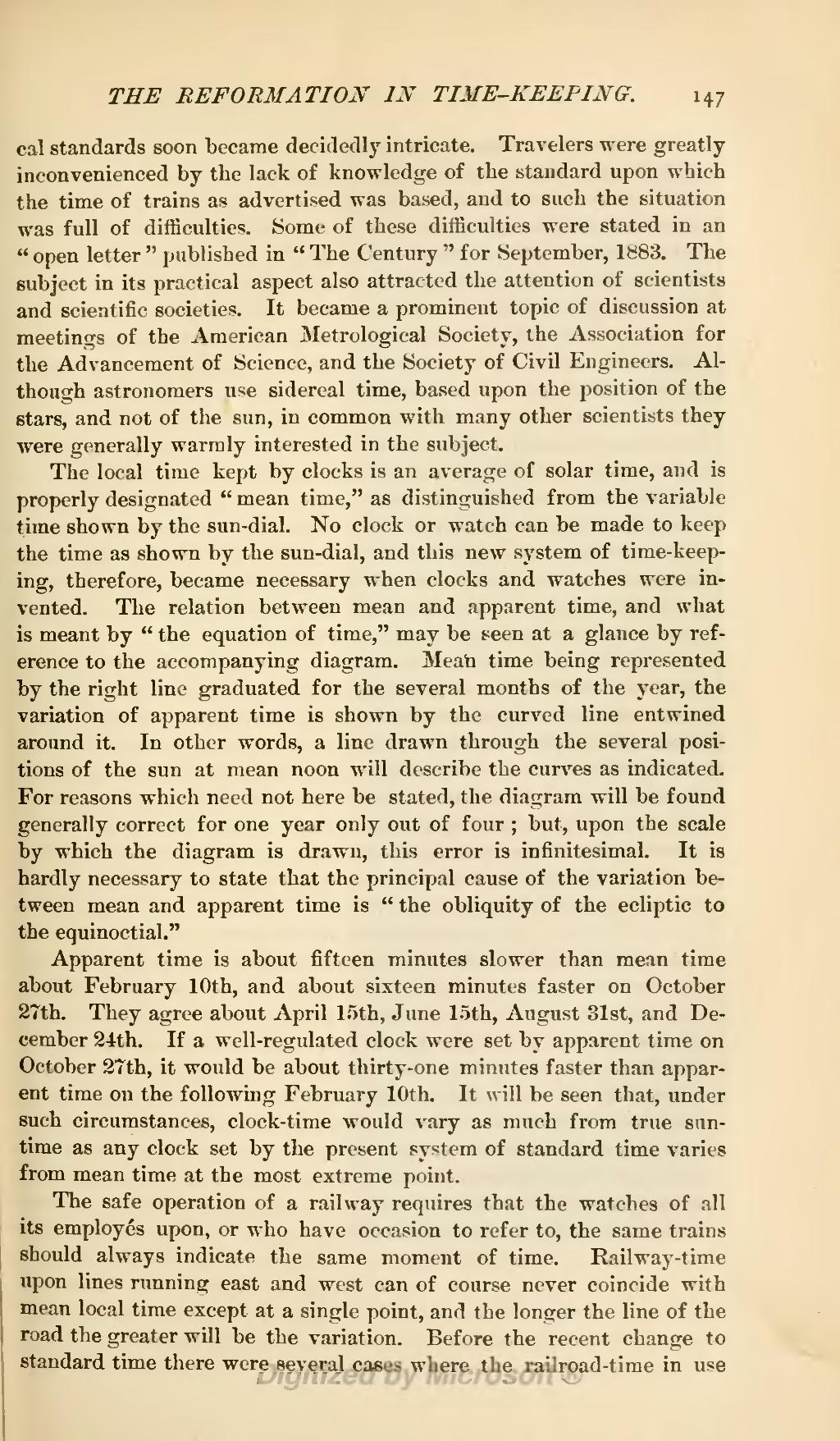cal standards soon became decidedly intricate. Travelers were greatly inconvenienced by the lack of knowledge of the standard upon which the time of trains as advertised was based, and to such the situation was full of difficulties. Some of these difficulties were stated in an "open letter" published in "The Century" for September, 1883. The subject in its practical aspect also attracted the attention of scientists and scientific societies. It became a prominent topic of discussion at meetings of the American Metrological Society, the Association for the Advancement of Science, and the Society of Civil Engineers. Although astronomers use sidereal time, based upon the position of the stars, and not of the sun, in common with many other scientists they were generally warmly interested in the subject.
The local time kept by clocks is an average of solar time, and is properly designated "mean time," as distinguished from the variable time shown by the sun-dial. No clock or watch can be made to keep the time as shown by the sun-dial, and this new system of time-keeping, therefore, became necessary when clocks and watches were invented. The relation between mean and apparent time, and what is meant by "the equation of time," may be seen at a glance by reference to the accompanying diagram. Mean time being represented by the right line graduated for the several months of the year, the variation of apparent time is shown by the curved line entwined around it. In other words, a line drawn through the several positions of the sun at mean noon will describe the curves as indicated. For reasons which need not here be stated, the diagram will be found generally correct for one year only out of four; but, upon the scale by which the diagram is drawn, this error is infinitesimal. It is hardly necessary to state that the principal cause of the variation between mean and apparent time is "the obliquity of the ecliptic to the equinoctial."
Apparent time is about fifteen minutes slower than mean time about February 10th, and about sixteen minutes faster on October 27th. They agree about April 15th, June 15th, August 31st, and December 24th. If a well-regulated clock were set by apparent time on October 27th, it would be about thirty-one minutes faster than apparent time on the following February 10th. It will be seen that, under such circumstances, clock-time would vary as much from true sun-time as any clock set by the present system of standard time varies from mean time at the most extreme point.
The safe operation of a railway requires that the watches of all its employés upon, or who have occasion to refer to, the same trains should always indicate the same moment of time. Railway-time upon lines running east and west can of course never coincide with mean local time except at a single point, and the longer the line of the road the greater will be the variation. Before the recent change to standard time there were several cases where the railroad-time in use
